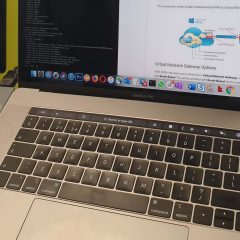macOS: Find your DHCP Server Address
KB ID 0001587 Problem In Windows this is easy to find, ‘ipconfig /all’ will tell you 🙂 On macOS it’s not so simple. Solution First you need to know which network card we are talking about! Your wireless network card is nearly always en0 (that’s a zero), if you are on a wired connection simply run ifconfig and find the right network card. to double check you can run; ipconfig getifaddr en0 Then to see your DHCP...
macOS: Create an ISO From a Folder
KB ID 0001554 Problem I had to get some files onto a server today that had no internet access. I did have iLO access, so if I could get the files into an .iso file, I could present that as a virtual CD/DVD drive, and install the software I required. But how to create an .iso file on my mac? Solution It’s a two step procedure, first you use Disk Utility to create a CDR image, then you convert that image to an ISO. Launch Disk...
Remote Connect to macOS
KB ID 0001539 Problem Remotely connecting to Windows is easy we’ve had RDP since Windows NT4, (yes I’m that old). But what if you want to remote connect to a mac? Well that has ‘Screen Sharing’ built in, (which it pretty much the same, but it uses VNC). If you’re unfamiliar with VNC, (Virtual Network Computing,) you can install it on both Windows and Linux. Normally you need a client, (to connect with)...
VMware Fusion on macOS Mojave: No Mouse or Keyboard
KB ID 0001523 Problem While building my new MacBook, I installed VMWare Fusion, (I always run a Windows VM, in case I have to do something on Windows). But no matter what version I tried to install, I could not interface with the VMs, (no mouse or keyboard). I ran Fusion 11 on my old MacBook, (running Mojave). So I was a bit confused. Solution Click the ‘Apple’ (top left) > System Preferences > Security and Privacy...
macOS – Editing the Hosts File
KB ID 0001268 Another guest post from Daniel Newton Problem I’ve had windows for years; I knew the OS inside out. Recently, I switched to Mac. But I wondered how to edit the hosts file for my VPN connections and my servers. After some research, I found out how to do it and thought I will document it on PeteNetLive! 🙂 Solution Open a terminal session and type in the following command; Sudo nano /etc/hosts Note: I’m using nano for this...


